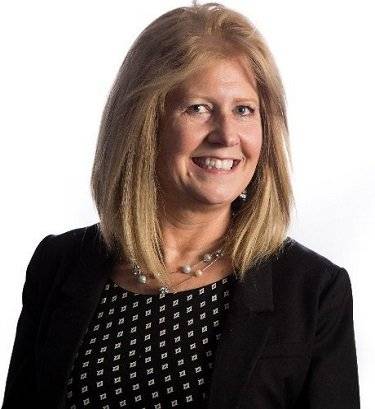The Two Sides of the IT Street in Education and the Important Role of Edtech Leaders
Informational and instructional technology has felt like two sides of a busy street. The traffic flow of students and teachers whizzing by and pulling up to whichever side provided the needed support and resources. If students and teachers needed instructional technology tools and strategies, they pulled up to the instructional team, and if they needed assistance with peripherals, devices or connectivity, they pulled up to the informational team. However, times have changed, and both sides of the street are now working together like a pedestrian-only walkway. Tech terminology like networks, firewalls, access point, bandwidth, servers, and phone systems now include terms such as student data privacy, accessibility tools, digital equity, cybersecurity, 1:1 initiative, and BYOD. Our students are growing up in a world where learning doesn’t just happen within the brick and mortar walls of schools. Resources such as hardcover textbooks, scantron sheets, poster boards, index cards, and worksheets are being replaced organically with content management systems, collaborative documents, videos, podcasts, and educational software. Teachers and students are personalizing learning experiences thru blogs, virtual field trips, multimedia presentations, robotics, and artificial intelligence.
In the Driver’s Seat
It is an exciting time to be an edtech leader! Influential, effective edtech leaders can impact education on a large scale. The responsibilities put upon edtech leaders guaranteeing robust infrastructures and comprehensive instruction technology integration ensure that school districts are providing students with opportunities to personalize their own learning 24/7 in a global community. Edtech leaders are part of the bigger conversation around educating the whole child, and this is evident when they can be seen observing classes, collaborating with curriculum directors, attending STEM fairs, and participating in school councils and PTO meetings. Their expertise and experiences in both sides of IT street ensure that students and teachers have access to connectivity, devices, software, and curriculum they need for researching, collaboration, connections, reflections and learning personal skills like empathy and self-awareness.
Pot Holes
However exciting the position, there are new challenges such as student data privacy and digital equity that edtech leaders must address with all stakeholders. Ask a room of classroom teachers if all educational software and apps are safe to use in classrooms and you may be shocked to hear the answer of yes. Who could blame them for their response? We, as district technology leaders, have been the driving force with technology integration in classrooms. We put devices in students’ hands, opened up our networks for personal devices, provided professional development training on the latest and greatest educational software and send teachers to conferences to see shiny new technologies. When talking to district and building administrators about student data privacy and the policies procedures and training are in place in the district, it is not uncommon for them to look at you like a deer in the headlights. With all they have going on in their buildings and district, data privacy may not be on the top of their to-do pile. Another stakeholder group, parents, are excited that their children are using Chromebooks, laptops, and iPads in classroom instruction and appreciate the parent web-based access to student grades, communications, and digital school forms. However, they are usually confused and concerned when asked whether they know if the apps and software their students are accessing are sharing data with third-party vendors. So edtech leaders are faced with a dilemma: how to secure personally identifiable information (PII) while at the same time allowing students and teachers to access the integrated curriculum and rich content software available today. The solution to this dilemma is education. They (students, parents, teachers admin staff, district, and building administrators) don’t know what they don’t know, and they look to edtech leaders for guidance and support. It is the edtech leader’s responsibility to involve all school community stakeholders in the process of developing data privacy professional development, procedures for vetting and procurement of district-owned software, and district and building level policies so that student and teacher data is monitored and protected.
The second challenge, digital equity, is the elephant in the room. The first day of school is an exciting time for students as they meet their teachers and classmates and are assigned textbooks and workbooks that they would use for their learning during the upcoming school year. In the last five years, we have seen these same textbooks and workbooks either replaced or supplemented with the school issues devices such as Chromebooks, laptops, and iPads. These devices have been game changer in the educational realm. Students have access to technology in and out of school resulting in them learning digital literacy skills that will benefit them now and in the future, as well as expanding their world to include different ideas, cultures, and interests. However, what happens when the library /media specialist tries to give a student a shiny new Chromebook and they refuse to take it home because they cannot access the internet from home? Up pops that large grey mammal of digital equity. According to the 2019 CoSN Digital Toolkit, “students without home access to high-quality broadband connectivity are at a disadvantage, unable to realize the full power of learning. definition of digital equity.” Edtech leaders understand that even one student without access to technology outside of school is one student too many. There is a solution to this problem. By assessing student connectivity needs, exploring funding opportunities including outreach to local service providers, and creating long term goals, all students can have access to the technology no matter their socioeconomic or geographical situations. Whether the district is urban or rural, large or small, a low or high percentage of mostly free and reduced lunch students, or has a high minority or white population, if digital equity is not part of the initial thought process when introducing technology into a classroom or district, we are failing all of our students.
Eileen Belastock, CETL, is an educational leader who is fueled by the belief that learning anytime anywhere is critical for both our students and educators. In her experiences as a district administrator, a building administrator, and a high school math teacher, she has been instrumental in providing students with equitable learning environments through multiple 1:1 programs and online educational environments. Throughout her career in both the corporate and educational environments, Eileen Belastock has encouraged and supported both adult and student learners to challenge themselves to find their passions, be lifelong learners and be contributing citizens in the 21st global environment.
Eileen models what she believes through her involvement on two Massachusetts edtech organizations, as a board director, whose missions are to educate and engage classroom teachers. She believes in supporting and highlighting educators and administrators as they work to ensure digital equity and student safety through her published articles in publications such as Tech & Learning, eSchool News, and EdScoop.




